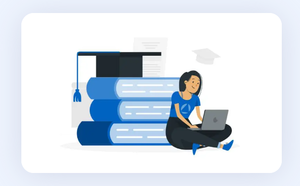How to Develop a Learning Management System: A Comprehensive Guide
الجسم
Introduction
In today's fast-paced world, e-learning has become more crucial than ever, and learning management systems (LMS) play a pivotal role in delivering educational content efficiently. If you're looking to create your own LMS, this guide will walk you through the process, covering every aspect of how to develop a learning management system. From planning to implementation, we've got you covered.
Key Components of an LMS
Developing a learning management system involves several key components that should be considered. Let's dive into each of them.
User-Friendly Interface
A user-friendly interface is essential to engage your learners effectively. Your LMS should be easy to navigate and provide a seamless learning experience.
Content Management
Efficient content management is the backbone of any LMS. You'll need a robust system to upload, organize, and update your educational materials.
User Management
Your system should support user registration, profiles, and role assignments. Different users might have different access levels.
Course Creation
Creating courses is a significant part of LMS development. You'll need to provide tools for adding content, quizzes, assignments, and multimedia.
Assessment and Progress Tracking
Incorporate features for assessing and tracking learner progress. This could include quizzes, tests, and detailed progress reports.
Communication Tools
To facilitate interaction, your LMS should have communication tools like forums, chats, and notifications.
Security and Privacy
Ensure the security and privacy of your users' data. Implement strong encryption and user data protection measures.
Mobile Compatibility
In today's mobile-centric world, make sure your LMS is accessible on various devices, including smartphones and tablets.
Scalability
Your LMS should be scalable to accommodate a growing user base. Consider the potential for adding more courses and users.
Reporting and Analytics
Integrate reporting and analytics to track the effectiveness of your courses and understand user behavior.
The Development Process
Now that you understand the key components, let's delve into the steps for building your LMS.
1. Define Your Objectives
Begin by setting clear objectives. What is the purpose of your LMS, and what are your target audience's needs?
2. Choose the Right Technology
Select the technology stack that suits your project's requirements. This decision will impact the system's performance and scalability.
3. Develop a Content Strategy
Create a strategy for organizing and delivering content. This is crucial for an effective learning experience.
4. Design the User Interface
Design an intuitive user interface that enhances the overall learning experience. Consider user feedback during this stage.
5. Implement User and Content Management
Develop the user management and content management systems. These components are the backbone of your LMS.
6. Course Creation and Assessment
Integrate tools for course creation and assessment, ensuring they align with your objectives.
7. Incorporate Communication Tools
Add communication tools to promote interaction and engagement among users.
8. Focus on Security
Implement robust security measures to protect user data and maintain user trust.
9. Ensure Mobile Compatibility
Optimize your LMS for mobile devices, making learning accessible on the go.
10. Test and Refine
Thoroughly test your LMS and gather user feedback. Use this feedback to make necessary improvements.
How to Develop a Learning Management System: FAQs
Q: Can I develop an LMS without technical expertise?
A: While technical knowledge can be helpful, you can hire a development team or use LMS development platforms that require minimal technical expertise.
Q: What is the average cost of developing an LMS?
A: The cost varies widely depending on features, complexity, and the development team. It can range from a few thousand dollars to several million.
Q: How long does it take to create an LMS?
A: The timeline can vary from a few months to a year or more, depending on the project's scope and complexity.
Q: What are the essential features of an LMS?
A: Essential features include user management, content management, course creation, assessment tools, and mobile compatibility.
Q: How can I ensure the security of user data?
A: Implement strong encryption, regular security audits, and compliance with data protection regulations.
Q: What are the best LMS development platforms?
A: Some popular LMS development platforms include Moodle, Canvas, and LearnDash.
Conclusion
Developing a learning management system is a substantial undertaking, but with careful planning and the right team, it's achievable. By focusing on user-friendliness, content management, and robust features, you can create a powerful LMS that meets the needs of your target audience.










تعليقات